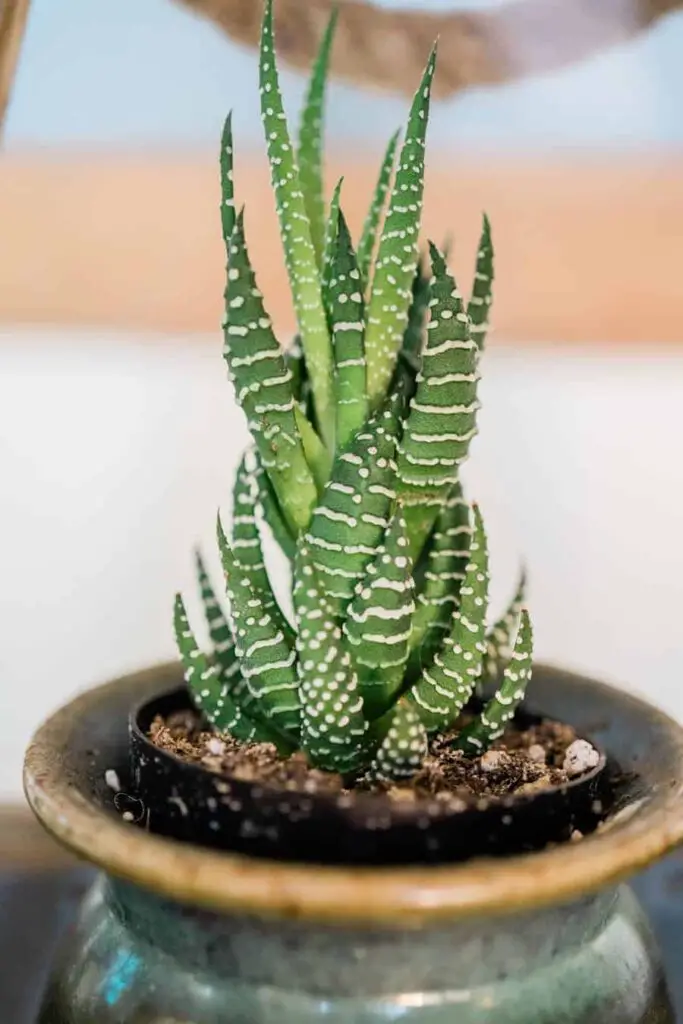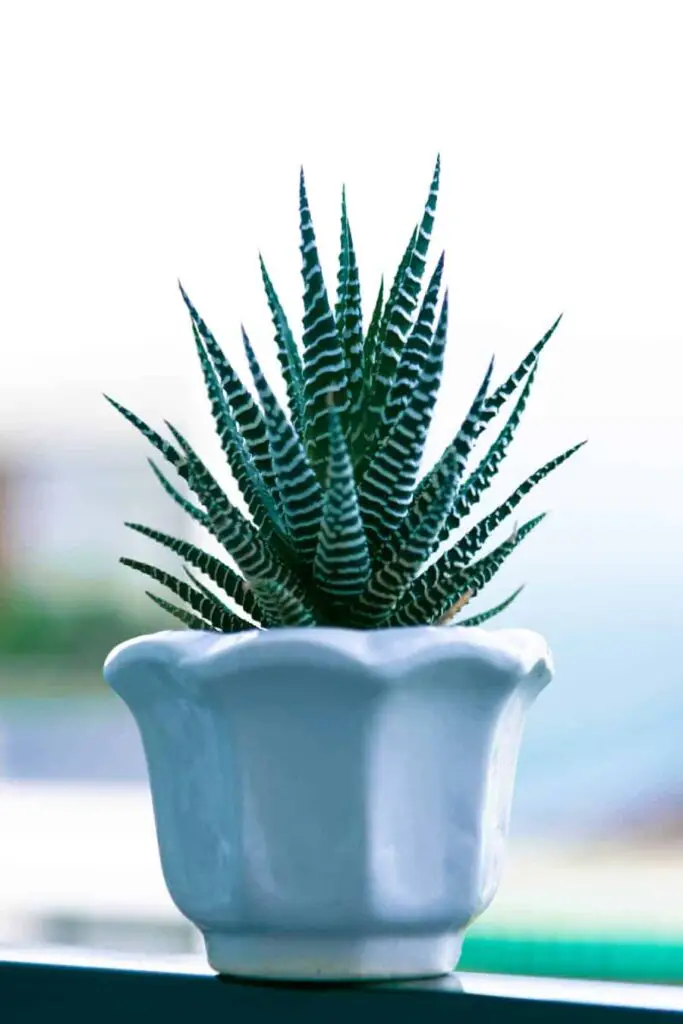Haworthia fasciata, commonly known as the Zebra Plant, is a popular succulent valued for both its visual appeal and ease of care. Native to South Africa, this plant has gained popularity in recent years as an indoor decoration and gardening option due to its unique appearance and ability to thrive in a variety of conditions.
In this article, we will explain the practical aspects of cultivating and caring for Haworthia fasciata. From its physical characteristics to specific care requirements to keep it healthy and vibrant, we will provide useful information for plant enthusiasts and gardeners alike.
Additionally, we will provide you with some tips for propagation, common disease or pest issues, and how to address them.
Through this practical guide, we hope to a deeper understanding of Haworthia fasciata and the necessary tools to successfully cultivate this beautiful plant in your home and gardens.
So let’s get started!
Haworthia fasciata
The succulent Haworthia fasciata is a succulent plant native to southern Africa. It belongs to the Asphodelaceae family, with an attractive appearance and ease of care, making it a popular choice among succulent enthusiasts.
This succulent species is commonly known as the “Zebra Plant” due to the white striped patterns adorning its leaves.
The leaves of Haworthia fasciata are thick, fleshy, smooth-textured, and dark green in color, triangular in shape with sharp, slightly translucent tips.
One of the most distinctive features of Haworthia fasciata is the pattern of white or translucent stripes that run horizontally across its leaves, similar to the stripes of a zebra, hence its common name.

This plant tends to be small to medium-sized, with leaves that can grow up to about 10 cm long.
Haworthia fasciata tends to form compact rosettes of leaves that grow in geometric patterns.
Like other succulents, it has a shallow, fibrous root system designed to efficiently absorb water and nutrients from the soil.
If you’ve decided to have a Haworthia fasciata “Zebra Plant” in your home or office, here are some tips on how to care for your succulent:
How to Care for the Zebra Plant?
Haworthia fasciata is a relatively easy succulent to care for, but it still requires some care to remain healthy and vibrant. Here are some general guidelines for caring for this plant:
1. Lighting: Haworthia fasciata prefers bright but indirect light. If you want to keep it indoors, place it near a window where it receives filtered light for much of the day.
If you are going to have it in your garden, avoid exposing Haworthia fasciata to direct sunlight for long periods, as it can burn the leaves. Place the plant where it receives more shade than direct sunlight.
2. Temperature: This succulent prefers moderate temperatures between 18 to 24°C. It is important to avoid extreme temperatures, especially in winter, as these plants love heat. If you live in a place where temperatures are very low and snowy, it is best to keep it indoors during this time to prevent your plant from dying.
3. Substrate: Use a well-draining succulent substrate mix. If you want to make your own substrate or plant your succulent directly in your garden, you can add coarse sand, perlite, or pumice to the soil to improve drainage and prevent root rot.
You can also add humus, compost, or some fertilizer to give the substrate extra nutrients.
Make sure the pot you choose has drainage holes at the bottom to allow excess water to drain properly.
4. Watering: Haworthia fasciata, like any good succulent, is susceptible to overwatering. Let the soil dry out completely between waterings.
During the summer, water the plant approximately once or twice a week, and reduce the watering frequency during the winter to every 15 days or less.
When watering, make sure to thoroughly soak the substrate, but avoid water pooling in the saucer under the pot or soaking the top.

5. Humidity: This succulent prefers relatively low humidity levels. It is not necessary to provide additional humidity, as it can promote fungus formation or even rot the plant if the humidity provided is excessive.
6. Fertilization: Haworthia fasciata does not require frequent fertilization. You can feed it with a diluted balanced fertilizer once a month during spring and summer or use homemade fertilizers.
Just avoid overfertilizing, as this can cause harm to the plant.
7. Replanting: Replant your Haworthia fasciata approximately every two years, or when you notice that the plant has completely filled its pot with roots.
Use a slightly larger pot than the previous one and fill it with fresh succulent mix.
If your Haworthia fasciata is directly in your garden, this step is not necessary.
8. Pruning: Remove dry or withered leaves from time to time to keep the plant clean and healthy. By removing dead leaves, the plant will have more energy to produce new leaves and grow the existing ones.
9. Pests and Diseases: Haworthia fasciata, due to the white bands on its leaves, can be susceptible to some common pests and diseases that affect succulent plants in general. Here are some of the pests and diseases that could affect Haworthia fasciata:
Scale Insects: Scale insects are small insects that feed on the sap of succulent plants and can appear as white or cottony spots on the leaves.
Mites: These are tiny arachnids that can infect the leaves of Haworthia fasciata, causing discoloration and deformities in the leaves.
Aphids: Aphids feed on the sap of plants and can weaken them if the infestation is severe.
Fungi: Various fungi can affect succulents, especially if there is excess moisture in the substrate. Overwatering can lead to root rot and the development of fungi on the leaves and stems.
Root Rot: This is a common disease in succulents, including Haworthia fasciata, that can occur due to overwatering or poorly drained substrate. This can cause the roots to rot and the plant to die.
Regular inspection of the plant for signs of pests or diseases and promptly removing affected plants can help prevent the spread of problems. In the case of severe infestations, it may be necessary to use appropriate insecticides or fungicides, following the manufacturer’s instructions.
10.Propagation: This succulent can be easily propagated through rosette divisions or leaf planting.
The propagation of Haworthia fasciata is a relatively simple and rewarding process.
There are some techniques you can use to propagate this succulent:
1. Propagation by offsets or side shoots: Haworthia fasciata produces offsets or side shoots that grow around the mother plant. These shoots can be separated from the main plant and transplanted to produce new plants.
To propagate by offsets, use a sharp, clean knife to cut the shoot from the mother plant. Make sure the cut is clean and includes a piece of root if possible.
– Let the cut air dry for one or two days to allow it to heal and reduce the risk of fungal infection.
– Once the cut is dry, plant the shoot in a pot with succulent soil. Keep the soil slightly moist (avoid waterlogging) and place the pot in a location with indirect light.
2. Leaf Propagation: Another way to propagate Haworthia fasciata is through individual leaves. Choose a healthy, complete leaf from the mother plant and carefully remove the leaf from the base.
Let the leaf air dry for one or two days to allow the cut to heal. Once the cut is dry, place the leaf on a succulent soil mix, burying the base of the leaf slightly in the soil.
Keep the soil slightly moist and provide indirect light. Over time, the leaf should begin to produce roots and new growth.
3. Seed Propagation: If you have access to Haworthia fasciata seeds, you can also propagate the plant from them. Plant the seeds in a well-draining succulent mix and keep the soil moist but not waterlogged.
Place the pots in a warm, bright location, but avoid intense direct sunlight. The seeds will germinate in a few weeks, and once the seedlings are large enough, they can be transplanted into individual pots.
Regardless of the method you choose, propagating Haworthia fasciata may take some time, but with patience and care, you can create new plants to enjoy in your garden or indoors.
By following these basic care instructions, your Haworthia fasciata should grow happily and decorate your home or garden with its distinctive beauty.
Conclusion
Haworthia fasciata is an attractive and easy-to-care-for succulent that adds a decorative touch to any succulent plant collection.
Its distinctive leaf pattern and resilience make it a popular choice among succulent enthusiasts and amateur gardeners alike.